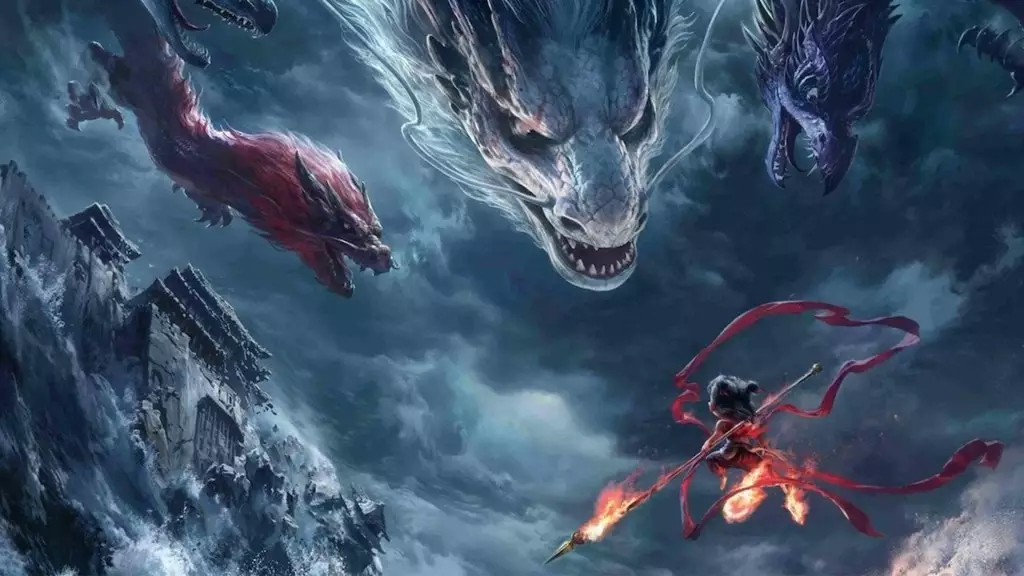In an otherwise subdued weekend for international box office rankings, a significant event unfolded as the animated feature Ne Zha 2 ascended to become the fifth highest-grossing film in history. This technical marvel from China has not just broken records but has also captivated global audiences. With an impressive total gross exceeding RMB 14.86 billion—approximately $2.054 billion—it’s fascinating to witness how this sequel, which picks up where its predecessor left off, has resonated so profoundly in various markets, with over $31 million added from international play.
This meteoric rise places Ne Zha 2 just ahead of monumental cinematic releases such as *Star Wars: The Force Awakens*. The film has surpassed the psychological barrier of $2 billion in total earnings, a feat not easily achieved, affirming the potency of animated storytelling when done right. Projections suggest that its total revenue within China alone may reach RMB 15.2 billion or $2.1 billion, indicating a lasting engagement with audiences domestically.
International Expansion and Box Office Tactics
While *Ne Zha 2* shines brightly on the leaderboard, its international rollout strategy has been equally crucial. Set to debut in markets such as Indonesia and various European countries soon, the staggered release plan is designed to maximize visibility and capitalize on global interest. The strategic timing allows the film to maintain momentum, keeping it fresh in the minds of potential viewers. Moreover, the Imax release, grossing $155 million overall—$151.6 million from China—hints at the increasing popularity of premium viewing formats that can provide enhanced experiences for audiences seeking immersive storytelling.
In the UK, where Imax constitutes 35% of the film’s preview launch, *Ne Zha 2* has set records for local-language openings, further underlining the dynamic shift in the perception of animated features. Initially seen as solely for children, films like *Ne Zha 2* are expanding the landscape, attracting viewers of all ages and backgrounds.
Warner Bros. and Disney: A Competitive Landscape
Turning to other major releases, Warner Bros.’ newest installment Mickey 17 found itself with a worldwide total of $90.5 million after a second-weekend release. It secured $15.6 million from overseas markets, while maintaining a robust presence in pivotal territories like Korea and the UK. Amidst its stronghold, the international box office crowd remains competitive, showcasing the tumultuous yet thrilling energy inherent in top-tier studio releases.
Disney’s Captain America: Brave New World also contributed significant earnings, currently standing at $388.6 million globally. Yet, contrary to *Ne Zha 2*’s overwhelming success, these Western blockbusters signify the reality of international cinema: the shifts in audience desires and preferences. The fact that Disney has already crossed the $1 billion mark for 2025—an industry first, by the way—underscores its hunger for not just competition but also for consistent blockbuster appeal, even as animated films begin to rival its traditional dominance.
Bridging the Gap: Old Favorites vs. New Thrills
Films such as Bridget Jones: Mad About the Boy have successfully clung to their share of international attention, holding steady with a cumulative gross of over $119 million. It is noteworthy that the UK remains a beacon for such films, outpacing earlier installments in the beloved franchise. This adaptability shows how nostalgia and humor can still hold their ground even as new offerings rise to prominence.
Additionally, the upcoming releases, such as Steven Soderbergh’s Black Bag, with its initial $4.3 million in international markets, illustrate the necessity for studios to continuously bring fresh perspectives to the audience. Competition within the box office is fierce, requiring films to evolve both in storytelling and presentation.
The international box office landscape continues to evolve, with Ne Zha 2 emerging as a trailblazer, exemplifying the power of storytelling coupled with strategic release plans. The varied success of other titles highlights an intriguing dichotomy: while the allure of established franchises is undeniable, the rise of innovative new entrants beckons new ways of engaging and delighting viewers.

